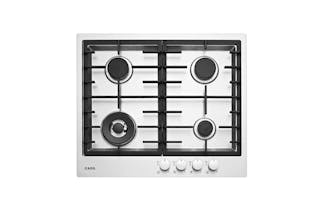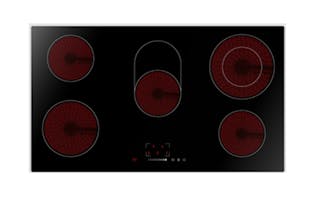Trial: Should you buy a full surface induction cooktop?
Our trial on the Miele full surface induction cooktop to find out if it's worth it.

The most recent innovation and buzz word in the world of cooktops is the full surface induction cooktop. Sounds exciting right? A single large adaptable cooking surface - are the days of having to accurately place your pots and pans onto a specific area over?

Currently, there are two manufacturers offering full surface models in New Zealand: Miele and Fisher & Paykel. We recently put Miele model KM 7678 FL through our test lab. How well did it perform, and does its ease-of-use claims warrant the $6599 price tag?
What is an induction cooktop?
First, a recap on what an induction cooktop is. An induction cooktop produces a high-frequency magnetic field. When you put cookware such as a steel-plated pan on to the magnetic field, energy is transferred into the metal. The pan then heats up and cooks the food directly. Induction cooktops are fast and responsive, and the cooktop stays reasonably cool as the heat is produced inside the cookware; making them a safer choice for households with small children. Aesthetically, they are sleek and stylish. They’re also easy to clean.
If you’d like to learn more about induction cooktops and their features, head over to our buyers guide here.
How does full surface differ?

A standard induction cooktop uses multiple zones as cooking areas. Some zones are larger than others but as long as you place your cookware within the zone it will heat up. If the pot or pan is too large for the zone then it may not heat up efficiently, so it’s important to match your cookware to the cooktop and zone you are using.
With a full surface cooktop the whole top is a single zone and the cooktop senses the size of the cookware that is placed upon it, adjusting the heating area accordingly. Therefore, unlike a standard induction cooktop, it doesn’t matter what size pan you use or where you put it. Sounds great, right? But what’re they like to use in the real world?
How we tested
We conduct three tests for all cooktop types:
- The cooktop’s ability to perform at a low temperature for a long time by making a white sauce that has to be simmered.
- The cooktop’s “turn down” capacity of the hob from a high to a low heat by cooking rice.
- The cooktop’s ability to deliver continuous high heat by making a stir-fry.
The results
The Miele full surface performed excellently in both the white sauce and stir-fry tests, and we saw good results for the rice test as well. But at this price point you would expect good results.
We were also interested to see how the Miele performed over the entire surface of the cooktop, so we tested how long it took to boil a litre of water in a variety of different sized cookware in multiple positions. We found some inconsistencies here, with smaller pans taking longer to boil along the front of the cooktop, and inconsistent heat on the front right-hand corner of the cooktop surface.

Whilst performing the white sauce test in the front-left corner, we found that the sauce cooked particularly unevenly; the temperature was so much higher on the left half of the pan that it caused the sauce to brown and stick to the pan. When this test was performed in the rear-left corner, the cooktop performed perfectly with no burnt sauce.
Consumers considering purchasing this particular cooktop should also note that there is an issue with pans of diameters between 100 and 145mm not always being detected in certain positions on the cooktop surface.
We can conclude that not all surface areas of the Miele cooktop perform equally. In fact, we found that there are essentially three main zones within the cooking area, and each area is made up of four cooking elements. This is similar to the ‘flexi-zones’ functionality of other standard induction cooktops on the market; where multiple cooking elements can be joined together to heat larger cookware.
Should you go full surface?
The full surface induction cooktop isn’t currently without its compromises, and we feel it’s important to be aware of these when forking out such a vast amount of money. Most of these issues are only minor and have work-arounds, and the beauty and flexibility of this cooktop may outweigh the issues for some prospective purchasers. However, the Miele KM 7678 FL does not currently rate highly enough to be one of our recommended models. If cooking performance is the most important factor in your induction cooktop choice, we would suggest you consider other standard, and less pricey, induction models first.
We hope to put an F&P model through its paces soon to see how well it compares.
We've tested 102 cooktops.
Find the right one for you.
AEG



Member comments
Get access to comment